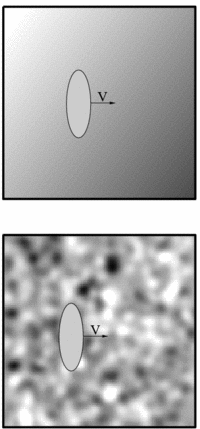At high temperatures the propagator possess a Markovian property and we can write down an equivalent Master equation. Unlike the case of the Zwanzig-Caldeira-Leggett model, genuine quantum mechanical effects manifest themselves due to the disordered nature of the environment.
Using Wigner picture of the dynamics we distinguish between two different mechanisms for destruction of coherence: scattering mechanism and smearing mechanism. The analysis of dephasing is extended to the low temperature regime by using a semiclassical strategy. Various results are derived for ballistic, chaotic, diffusive, both ergodic and non-ergodic motion.
